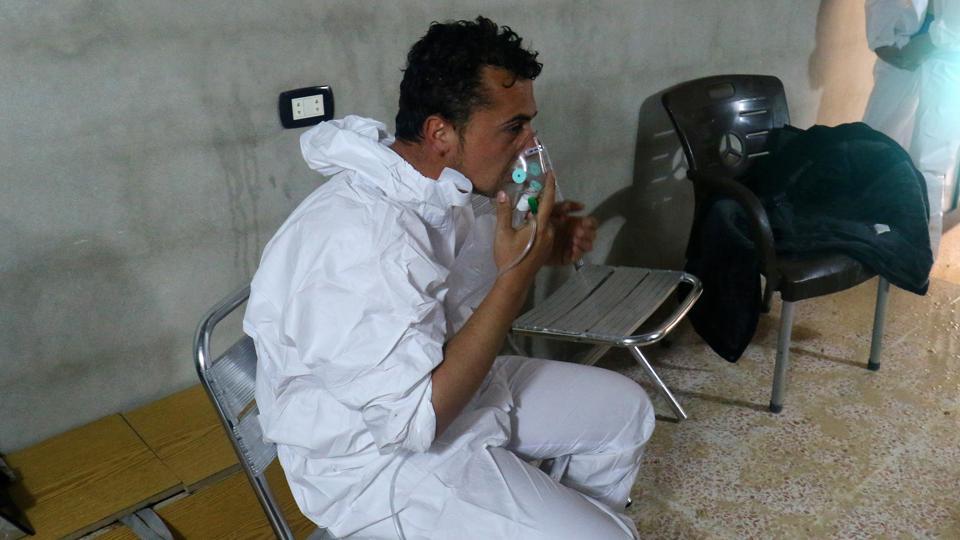How are we reacting to Syria’s chemical attack?


On Tuesday the world reacted to footage coming from the Syrian province of Idleb after a chemical attack was carried out in the opposition-held town of Khan Sheikhoun. Dozens of people, including children, were shown gasping for breath, followed by images of dead bodies on the streets and overcrowded hospitals which were then targeted by airstrikes.
On Wednesday, the UN Security Council held an emergency meeting to discuss the course of action following the attack.
“If confirmed, this would constitute the single largest chemical weapons attack in Syria since the attack on eastern Ghouta in August 2013,” said Kim Won-soo, the UN High Representative for Disarmament Affairs.
“Reports have stated that the attack was carried out through an airstrike on a residential area [but] the means of delivery of the alleged attack cannot be definitively confirmed, at this stage,” he added.
Meanwhile, Russia faced fury at the Council as they acknowledged planes did attack the town but said the aircraft struck a depot producing chemical weapons, which caused the incident. This version was largely criticized and classified as “pretty fanciful” by chemical weapons expert Col Hamish de Bretton Gordon.
After all the reactions and discussions held on Wednesday, postmortems conducted by officials from the World Health Organization (WHO) and officials from Organization for the Prohibition of Chemical Weapons (OPCW) in Adana, Turkey have confirmed that chemicals weapons were used in an attack that killed at least 72 people in the Syrian province of Idleb, Turkey justice minister Bekir Bozag told state-run Anadolu news agency.
WHO had reported “the likelihood of exposure to a chemical attack is amplified by an apparent lack of external injuries reported in cases showing a rapid onset of similar symptoms, including acute respiratory distress as the main cause of death.”
The results came as Syrian foreign minister denied that his government used chemicals weapons in the attack.
More so, to further confirm the attack, rescue workers gathered soil samples from the scene and sent them to western intelligence officials, who will seek to determine which nerve agent was used in the attack. Also, the samples and biological specimens taken from survivors and victims will be compared with samples taken by intelligence officials from the Syrian military stockpile when it was withdrawn from the country in 2013.
According to experts, Syria’s sarin stockpile is known to have particular properties which can be matched to samples taken in the field.
On the other hand, Amnesty International (AI) urged the UN Security Council to take action.
“The Security Council must immediately vote to investigate this attack and help bring those responsible to justice. Failure to do so would be catastrophic, risking further emboldening governments and armed groups in Syria to target civilians in war crimes with banned and conventional weapons alike,” said Anna Neistat, Senior Director of Research at Amnesty International.
Furthermore, Peter Apps, Reuters global affairs columnist, heightens the importance of the use of chemical weapons. He says chemical weapons “have held a psychological and political shock value in many ways out of proportion to their physical or military effect. Alongside the threat of biological warfare, they hold a very distinct horror.”
“In general, what happened in Syria on Tuesday is a reminder that those at greatest risk of chemical weapons attacks are those whose government wishes to make an example of them.”
LatinAmerican Post





